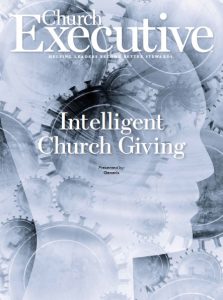
Today, millennials are the demographic on the top of most organizations’ priority list. It’s no surprise that brands are reinventing the way they market in order to reach the fastest-growing generation in the workforce and marketplace, and officially, the nation’s largest living generation.
The millennial generation, which comprises those born between 1981 and 1997, grew up more digital, open-minded and information-hungry than any previous generation.
They are more connected than ever before — except to faith. Twenty-five percent of American millennials are unaffiliated, describing their religion as “atheist,” “agnostic” or “nothing in particular.” According to Pew Research Center’s Forum on Religion & Public Life, this percentage is double that of baby boomers as young adults in the 1970s.
While there’s urgency, there’s also hope. Though increasingly disconnected with the church, they are still the fastest-growing demographic in your church, and their generosity and desire as a generation to connect with and give to causes they care about demonstrates their potential to connect — and give — to you. The 2015 Millennial Impact Report found that 84 percent of employed millennials donated to a charity in 2014.

There’s no mistaking that they are, and must be, the future of your church in attendance and giving. As older generations near retirement, and face financial insecurity from medical concerns and fixed incomes, your church’s current income streams might decline. As that happens, millennials will continue to grow in skills and talents that make them higher earners. Millennials will be the main source of funding for your church.
It’s crucial for churches to employ strategy; but to truly engage the millennial giver, we must engage their hearts in a cause like no other: knowing Jesus and making him known.
These three principles will refocus and realign your efforts to engage the millennial giver:
#1: Cause
It’s imperative for millennials to know what their financial gifts support directly. The best non-profit organizations excel because they embrace the power of transparency in fundraising, by letting donors know what their funds will accomplish even before they sign a check or click the “give” button.
Churches must share where money goes once it leaves the offering plate. Transparency cultivates trust. It also harnesses the millennial desire to make an immediate difference.
Millennials believe that the world needs changing and that they’re the generation to make it happen. They passionately get behind causes the church supports —

serving the homeless, feeding the hungry, ending sex trafficking, and supporting under-served children around the world. Connect their generosity to the greatest cause of all — the spread of the gospel — and outline how the local church uses financial resources to make that happen.
CAUSE TIP: Marinate your church in stories about life change from your ministries. Mission statements and budgets fail to capture the heart. Without a heart-capture, generous giving (from any generation) is unlikely. Demonstrate concrete life results through your project and church.
#2: Convenience
Digital lifestyle is increasingly normal for everyone, but it’s all this generation has ever known. They can’t remember the last time they handed a friend cash for their half of the dinner, a road trip or concert tickets. This is all online, in smartphone apps — and usually described with an emoji.
According to the Federal Reserve, checks accounted for 15 percent of all non-cash payments in 2012, and that number is getting lower. Technology is getting safer, cheaper, faster and more fun.
Services that can help automate spending and giving are a huge help. They allow budgets to stay steady and encourage giving to be a normal, expected part of life. Incidentally, recurring giving is one of the most convenient things for your admin and finance teams, too.
Apps, online giving portals and text-to-give options might seem radical to a traditional church. But when checks became the norm instead of cash, people were leery until they became status quo. Then, we began using little plastic cards to pay for items. Now, the center has shifted again; the majority is marching to a digital drummer.
CONVENIENCE TIP: Use your offering moment to showcase how to give digitally. The more we “normalize” the practice, the more inclined people will be to give it try.
#3: Conviction
Now, we’re at the heart of the issue. To truly engage the millennial giver, we must ensure they know the one to whom we are giving. As Andy Stanley, founder of North Point Ministries, says, “We talk about money not because of what we want from you, but because of what we want for you.”
Leading millennials to be generous should be an overflow of their pursuit to know and follow Jesus. Giving to the church is a result of a heart that wants to be aligned with what the Father wants. To develop a generous culture, churches must disciple young believers to know the generous ways and commands of Jesus. Do your messages communicate that giving is an act of worship, a way to be used by God in the lives of others and demonstration of a grateful heart?
CONVICTION TIP: Church leaders engage in discipleship by emphasizing and remembering the supremacy of Christ in all of our life affairs, including finances. How we respond to the character of God reveals and molds how we live. The faith-and-finances conversation is essential to caring for people’s hearts and spiritual maturity.
The primary goal of developing a generous spirit among millennials in your church is developing their spiritual maturity. The secondary goal is to financially resource your church mission. If we treat millennial’s hearts like a caring shepherd (the first goal), engaging them in funding the mission actually comes more easily (the second goal).
This article was compiled by the experienced guides of Generis. To learn more about Generis’ passion to partner with ministries on giving projects with God-sized vision and Kingdom implications, please visit generis.com.


